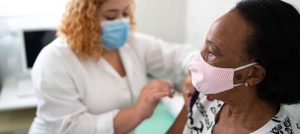CA governor signs bill allocating $150M to struggling hospitals
The goal is to help struggling hospitals remain in operation, or assist in the reopening of recently closed hospitals.

Photo: Tempura/Getty Images
California Governor Gavin Newsom, with the support of the California Legislature, signed a bill this week creating a new $150 million Distressed Hospital Loan Program to provide zero-interest cash flow loans to nonprofit or public hospitals experiencing extreme financial distress.
The goal is to help struggling hospitals remain in operation, or assist in the reopening of recently closed hospitals.
The Governor's Office, California Health and Human Services Agency, and the Department of Health Care Access and Information (HCAI) worked with the California Health Facilities Financing Authority (CHFFA) and the California Legislature to develop the loan program.
WHAT'S THE IMPACT
The new Distressed Hospital Loan Program will be administered by HCAI in partnership with CHFFA.
HCAI will develop eligibility criteria for the loans, including factors such as cash on hand; whether it is a small, rural or critical access hospital; a hospital that serves a disproportionate share of Medi-Cal patients; if closure would significantly impact access to services in the region; and other factors.
Qualifying hospitals would be required to submit a plan to HCAI and CHFFA detailing how they will return to financial viability and continue to operate long-term.
Loans disbursed through this new program may also be eligible for forgiveness under certain conditions, to be determined by HCAI.
The California Health and Human Services Agency, along with its departments, has been working with any community hospital that may be in financial distress, according to the Governor's Office. The Department of Health Care Services has been available to engage with any facility to ensure any Medi-Cal payments that can be advanced are advanced, in order to provide the community hospital with additional funds to remain open.
The Department of Managed Health Care has continued to engage with health plan partners to ensure payments are made timely to community hospitals, the Governor's Office said.
In the event a community hospital does close, the Department of Public Health works with the community hospital on its closure plan and ensures patients and community partners are aware of alternative providers in the community that are able to care for them, including behavioral health and primary care services.
THE LARGER TREND
Rural hospitals in particular have been besieged by financial distress and closures in recent years. Between 2010 and 2021, 136 rural hospitals closed, according to data published last fall by the UNC Cecil G. Sheps Center.
The majority of rural closures, 74%, happened in states where Medicaid expansion was not in place or had been in place for less than a year, the findings showed. And rural hospitals face significant staffing shortages. Only 10% of physicians in the U.S. practice in rural areas despite rural populations accounting for 14% of the population. Nearly 70% of the primary care Health Professional Shortage Areas (HPSAs) are located in rural or partially rural areas.
An American Hospital Association analysis of the UNC Sheps Center rural hospital closure data between 2010 and 2020 shows that slightly more than half of the hospitals that have been closed were independent.
In 2020, rural hospitals supported one in every 12 rural jobs in the U.S. as well as $220 billion in economic activity in rural communities, data showed.
Twitter: @JELagasse
Email the writer: Jeff.Lagasse@himssmedia.com













































